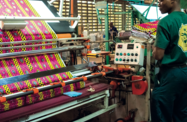Despite high demand for cement in Kenya, profit margins in the sector remain under pressure, as competition ramps up.
Growth in the Kenyan construction sector – driven by major infrastructure projects such as the Standard Gauge Railway as well as a push to expand housing supply – reached 13.1% year-on-year (y-o-y) in 2014, more than double the 2013 figures. Construction accounted for 4.8% of GDP in 2014, according to the Kenya National Bureau of Statistics (KNBS) Economic Survey 2015.
Rising activity has led to demand for cement in Kenya increasing at a rate of 21.8% in 2014 to a total 5.2m tonnes, according to government figures, just under half the total volume for East Africa as a whole.
Excess capacity
The growth in construction activity has been a boon for producers, but the scope for further increases in the near term is sizeable, given that Kenya’s per-capita consumption remains well below that of other major economies on the continent. Annual per-capita demand for cement averages 100 kg, according to sector players, compared with 506 kg in Egypt and 230 kg in South Africa.
However, the rise in domestic demand has not necessarily translated to a healthier balance sheet for the country’s producers. The average net profit margins for Kenya’s cement firms hit an all-time low of 11% last year, according to ARM Cement.
This is in part a result of cheaper imports from China, India and Pakistan, where production costs are significantly lower. Electricity costs, which make up some 40% of the total cost in cement production, remain quite a bit higher in Kenya than those in some Asian countries, putting pressure on local producers.
Competition may increase following a recent decision by the East African Council of Ministers to lower the duty on cement imports from non-East African Community countries from 35% to 25%.
The council has also removed cement from the list of sensitive industries that require protection until domestic industries can compete. “This will only create unnecessary competition from manufacturers outside the region, leading to an influx of cheap cement imports,” Ronald Ndegwa, CEO of Savannah Cement told local media. “Until the cost of production in the region comes down, we still feel that it is unfair to remove cement from the sensitive items list. It is likely to put the ongoing industry expansion plans in jeopardy.”
A 2013 decision by the Ministry of Mining to impose a KSh7 ($0.07) levy on every 50-kg bag of cement produced has also impacted the competitiveness of the sector. However, the government has defended its position, saying that the proceeds would be used to support the economy.
With production on the rise, excess capacity is set to grow. According to projections from investment firm African Alliance, excess supply in Kenya will amount to 23% of production this year. The country will be producing about 6.8m tonnes and will consume 5.2m, translating into an excess of 1.6 tonnes.
Inbound & outbound growth
However, demand for cement in the East African Community − which includes Kenya, Tanzania, Uganda, Rwanda and Burundi − is also booming, leading to Kenyan cement companies pursuing growth outside the domestic market.
National Cement, owned by Nairobi-based Devki Group, is planning to expand capacity at its 2m-tonne-capacity Lukenya plant by 20%, as well as investing KSh14.6bn ($188.8m) in a new facility in Uganda, which will be operational by the end of 2016 with a capacity of 1m tonnes. This follows the construction of a clinker plant by ARM Cement in Tanga, Tanzania in late 2014 that boasts an annual capacity of 1.2m tonnes, and a planned 750,000-tonne-capacity cement plant that is expected to come on-line in early 2016. These projects bring ARM Cement’s total investment to around $150m.
Yet as some producers look further afield, plans are being made to expand local capacity as well, to better address the rising domestic demand and encourage economies of scale. ARM Cement also announced plans last year for a KSh34.4bn ($351m) integrated clinker and cement plant in Kitui County that will have a capacity of 2.5m tonnes per year upon completion, which should take three to four years.
Nigeria’s Dangote Cement has also stated its intention to build a plant in Kitui County with an annual capacity of 3m tonnes, while Cemtech Kenya, a subsidiary of India’s Sanghi Group, will build a 1.2m-tonne plant in Pokot County in Western Kenya.

